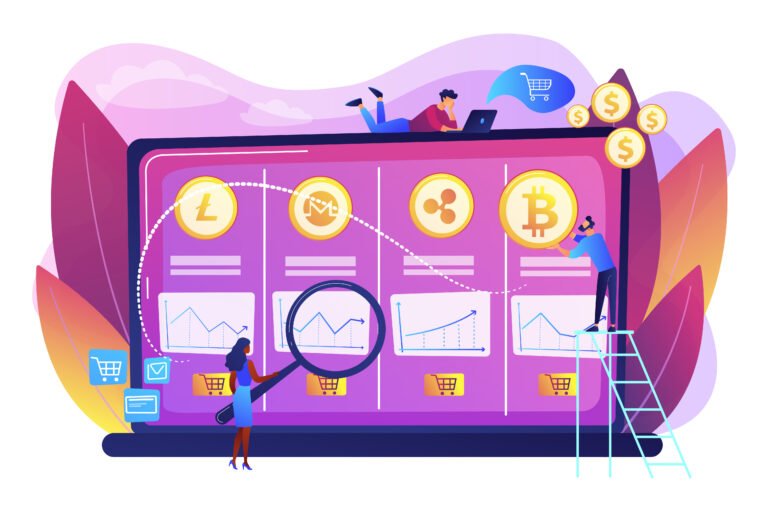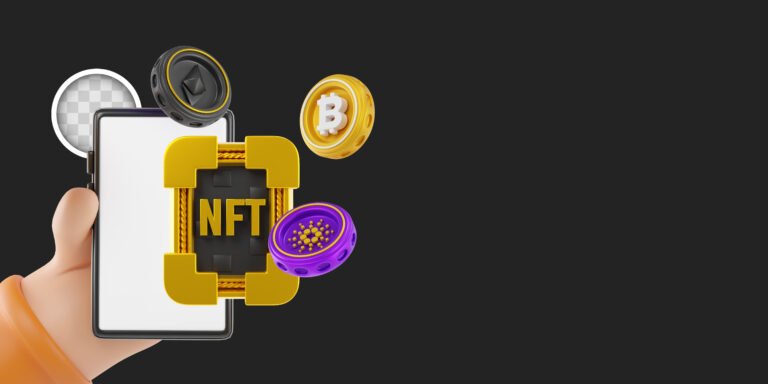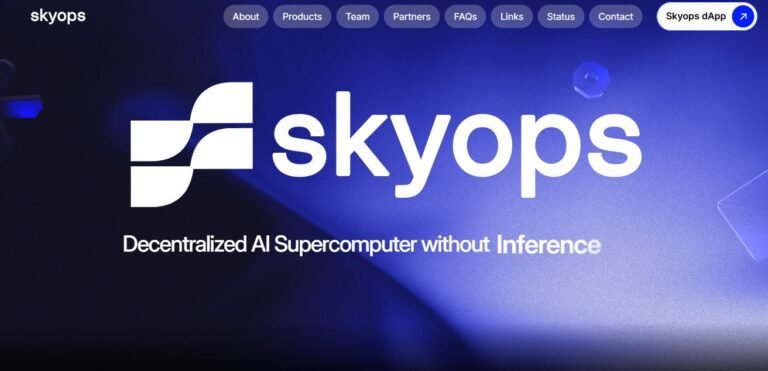Top 5 Crypto Rate Tackers That Are Actually Accurate
1. Why Accuracy in Crypto Prices Matters
Real-Time Volatility Requires Real-Time Tools
The crypto market moves fast—sometimes in seconds. A sudden tweet, policy shift, or whale movement can cause major price swings. In such a volatile environment, having real-time price data isn’t a luxury—it’s a necessity. Whether you’re trading Bitcoin, monitoring altcoins, or analyzing meme coins, accurate rate tracking is the foundation of smart decision-making.

The Risks of Outdated or Inaccurate Rate Data
Relying on laggy or unreliable price trackers can lead to costly mistakes—missed buying opportunities, poor sell decisions, or falling for arbitrage traps that no longer exist. Many apps and websites pull delayed data or only aggregate from a few exchanges, giving you a skewed picture of the market. In crypto, even a 30-second delay can cost you big.
Choosing the Right Tracker for Your Use Case
Not all crypto rate trackers are created equal. Some focus on high-frequency updates, while others offer advanced analytics or integration with trading tools. The best one for you depends on whether you’re a day trader, long-term holder, developer, or simply a curious investor. In this article, we break down the top 5 most accurate crypto rate trackers to help you find the perfect fit.
2. What Makes a Crypto Rate Tracker “Accurate”?
When it comes to crypto price tracking, accuracy is more than just showing the “latest” number. It’s about how that number is sourced, updated, and presented. Here’s what separates the best from the rest:
Data Sources: Aggregated, On-Chain, or Exchange-Specific
Accurate trackers rely on multiple data sources, not just one or two exchanges.
- Aggregated data pulls prices from dozens (sometimes hundreds) of exchanges to provide a fair market value.
- On-chain data adds another layer by analyzing real transaction flows.
- Exchange-specific trackers are fast but may be limited if you only use one platform.
The more diverse and transparent the data sources, the more reliable the price feed.
Update Frequency and API Latency
Crypto prices change every second, so a good tracker needs to refresh its data in near real-time.
- Some platforms update every 5–10 seconds, while others update per tick (trade).
- API latency (delay in server response) can make or break high-speed decisions—especially for traders using bots or alerts.
Fast refresh rates and low-latency APIs are key indicators of a reliable tool.
Depth of Market Coverage: Global vs Local
Top trackers offer a global average, but it’s also useful to see localized prices—especially if you’re dealing with fiat pairs like PKR, INR, or NGN.
- The best tools offer region-specific prices, arbitrage opportunities, and fees included in their rates.
- Depth also includes smaller altcoins and newer tokens that many trackers ignore.
Broad and deep market coverage ensures you’re seeing the true picture, not a filtered snapshot.
Transparency in Methodology
A good tracker will clearly explain how it calculates its prices—whether it’s a time-weighted average, volume-weighted average, or something else.
- Platforms like CoinGecko and Nomics are praised for their transparency.
- Look for trackers that publish their methodology, update logs, and sources used.
If a tool won’t tell you how it calculates its data, it’s a red flag.
3. Top 5 Crypto Rate Trackers (With Pros & Cons)
3.1 CoinGecko – The Community Favorite
Why It’s Known for Fast Updates
CoinGecko has earned its reputation as a go-to platform for real-time crypto tracking. It aggregates data from 600+ exchanges, covering thousands of coins, tokens, and trading pairs. Unlike many competitors, CoinGecko refreshes price data frequently and includes additional metrics like developer activity, social sentiment, and liquidity.
What sets it apart is its neutral stance—it’s independent and not owned by any exchange, which adds credibility to its data integrity. CoinGecko is especially popular among retail traders, researchers, and developers for its clean design and accessible tools.
✅ Pros:
- Decentralized Data Aggregation – Pulls from a massive number of sources for balanced pricing
- Free Public API – Ideal for developers building apps, bots, or analytics dashboards
- User-Friendly Interface – Sleek design, customizable watchlists, and dark/light modes
- Extra Insights – Includes developer activity, community engagement, and historical data
❌ Cons:
- Some new or micro-cap coins may have slightly delayed updates
- Lacks in-depth charting compared to tools like TradingView
- Occasional downtime during extreme market volatility
Best For: Everyday users, researchers, and developers who want a balanced view of the crypto market.
3.2 TradingView – For Technical Traders
Price Accuracy Meets Charting Power
If you’re a trader who lives by the charts, TradingView is likely your second home. While not a traditional “crypto tracker,” TradingView provides real-time price feeds directly from top exchanges like Binance, Coinbase, and Kraken. Its edge lies in its unmatched charting capabilities, custom indicators, and deep analysis tools.
TradingView is trusted by day traders, swing traders, and analysts alike—not just for its accuracy, but also for its customizable alerts and community-driven chart ideas. You can even create and backtest trading strategies using their scripting language, Pine Script.
✅ Pros:
- Precision Charts – Ideal for candlestick patterns, moving averages, RSI, and more
- Custom Alerts – Set real-time price alerts on any asset
- Exchange-Specific Pricing – Pull prices from your preferred platform
- Multi-Asset Tracking – Covers crypto, stocks, forex, and more in one dashboard
❌ Cons:
- Limited Fundamental Data – Lacks depth on project insights, tokenomics, or dev activity
- Steep Learning Curve – Can be overwhelming for casual users or beginners
Best For: Technical traders and analysts who rely on charting for entry and exit decisions.
3.3 CryptoCompare – Great for Developers & Analysts
High Accuracy with Historical Insights
CryptoCompare is a well-respected platform in the crypto analytics world, especially among professionals and developers. It offers granular historical data, real-time price feeds, and deep integration options via API. Unlike flashier apps, CryptoCompare focuses on data integrity, accuracy, and insights—not hype.
Its strong suit lies in providing accurate prices across global exchanges, with additional tools for tracking portfolios, mining stats, and even ICO performance. It also features a robust news aggregator, pulling relevant crypto news alongside your watchlist.
✅ Pros:
- Reliable Historical Data – Perfect for backtesting, research, or academic use
- News Integration – Shows related articles and updates tied to each asset
- Custom Widgets & API – Excellent for building data-driven dashboards
- Regulatory Focused – Offers enterprise-level tools for institutions
❌ Cons:
- Outdated UI – Not as visually appealing or beginner-friendly
- Mobile Experience – Less optimized compared to modern crypto apps
Best For: Developers, analysts, and professionals looking for precision and historical depth.
3.4 Coinpaprika – Lightweight Yet Surprisingly Deep
Minimal Design with Maximum Accuracy
Coinpaprika may not be as flashy as some of the bigger names, but it punches above its weight in terms of data accuracy and independence. Unlike many platforms that rely heavily on exchange-reported data, Coinpaprika gathers and verifies its own information, making it one of the most transparent trackers available.
Its interface is clean, fast, and minimal—perfect for users who just want price, market cap, volume, and some basic analytics without the noise. Coinpaprika also shines in listing newer or lesser-known tokens early, giving users an edge in discovering hidden gems.
✅ Pros:
- Independent Data Collection – Avoids inflated volume figures or biased exchange data
- Fast & Lightweight – Quick load times with a no-clutter interface
- Early Token Listings – Often lists small-cap or new tokens before others
- Free API Access – Ideal for lightweight apps and custom tools
❌ Cons:
- Limited Features – Lacks detailed charting, alerts, or in-depth research
- No Mobile App – Web-only experience may limit usage on the go
Best For: Minimalist users, early adopters, and those who value raw, clean data without distractions.
4. Bonus Mentions: Niche Trackers Worth Trying
While the top five trackers dominate most discussions, several lesser-known platforms offer unique strengths. Whether you’re looking for cleaner design, transparency, or institutional-level analytics, these tools are definitely worth exploring.
🔹 Live Coin Watch – Clean Interface, Solid Refresh Rate
Live Coin Watch is a user-friendly and visually appealing tracker with real-time price updates and an intuitive dashboard. It’s a great alternative to CoinMarketCap, especially for users who want quick access to multiple coin metrics without the clutter.
Highlights:
- Customizable dashboard with favorite coins
- Real-time refresh with smooth UX
- Fiat conversions and time zone controls
Best For: Users who want a beautiful, fast, and simple crypto price overview.
🔹 Nomics – Transparent Methodology, High-Frequency Updates
Nomics made waves by promoting “transparent volume”, which filters out suspicious or inflated trading activity from shady exchanges. It uses a clean API-first approach and prides itself on frequent, high-quality data updates.
Highlights:
- Transparency-first data model
- Free API access with deep documentation
- Ideal for devs and market analysts
Best For: Developers and serious investors who care about data quality and exchange legitimacy.
🔹 Messari – Institutional-Grade Analytics with Price Feed
Messari isn’t just a rate tracker—it’s a full-blown crypto intelligence platform. Known for its in-depth research reports, token ratings, and curated metrics, Messari is often used by VCs, analysts, and hedge funds. It includes live price feeds with context, not just numbers.
Highlights:
- High-quality crypto research and news
- Real-time pricing with detailed metrics
- Governance, tokenomics, and market insights
Best For: Professionals and institutions who want context-rich data with every price point.
5. How to Choose the Right Tracker for You
With so many great crypto rate trackers available, the “best” one really depends on how you use it. Here’s how to narrow it down based on your trading style, device preferences, and feature needs:
🔸 Are You a Day Trader or Long-Term Holder?
Your trading strategy should guide your choice:
- Day Traders need ultra-fast updates, live charts, and precision alerts. Platforms like TradingView or CryptoCompare are built for rapid decision-making and technical analysis.
- Long-Term Holders can afford to rely on aggregated averages and broader metrics like market cap, volume, or development activity. Tools like CoinGecko or Messari offer more strategic insight than just price action.
🔸 Mobile Use vs Desktop Dashboards
- If you’re always on the move, look for a tracker with a clean mobile app, like CoinMarketCap or Live Coin Watch, which syncs across devices.
- For analysts and power users, desktop-based dashboards with full-screen charts and data exports (e.g., TradingView, CryptoCompare) are a better fit.
🔸 Do You Need Alerts, Widgets, or API Access?
- Alerts: If you want real-time price notifications, look for platforms with push alerts or SMS support—TradingView excels here.
- Widgets: For bloggers, websites, or dashboards, CoinGecko and Nomics offer easy-to-embed widgets.
- API Access: Developers and analysts should prioritize tools with robust, transparent APIs like those from CoinGecko, CryptoCompare, and Nomics.
6. Final Thoughts: Don’t Rely on Just One Source
Cross-Reference for Confidence
Even the most accurate trackers can show slightly different prices due to exchange timing, volume discrepancies, or data aggregation methods. That’s why it’s smart to cross-check data between multiple trackers—especially when making big buy/sell decisions or analyzing market trends.
Combine Trackers with Exchange Prices
While third-party trackers are great for big-picture insights, always verify critical price points directly on your preferred exchange. This is especially important if you’re actively trading, as slippage, spread, and liquidity can differ from what the tracker shows.
Use Alerts and Watchlists to Stay Ahead
Whether you’re monitoring BTC’s next breakout or waiting for an altcoin dip, real-time alerts and custom watchlists are your best tools. Trackers like TradingView, CoinMarketCap, and CoinGecko allow you to set alerts, track specific pairs, and get notified instantly—giving you a clear edge in the fast-paced crypto space.
TL;DR: Stay Informed, Stay Ahead
The crypto market never sleeps. With the right mix of accurate rate trackers, smart alert tools, and cross-platform verification, you can trade smarter, spot opportunities earlier, and avoid common pricing pitfalls.
Read Also: How to Analyze Crypto Rates Before Buying







